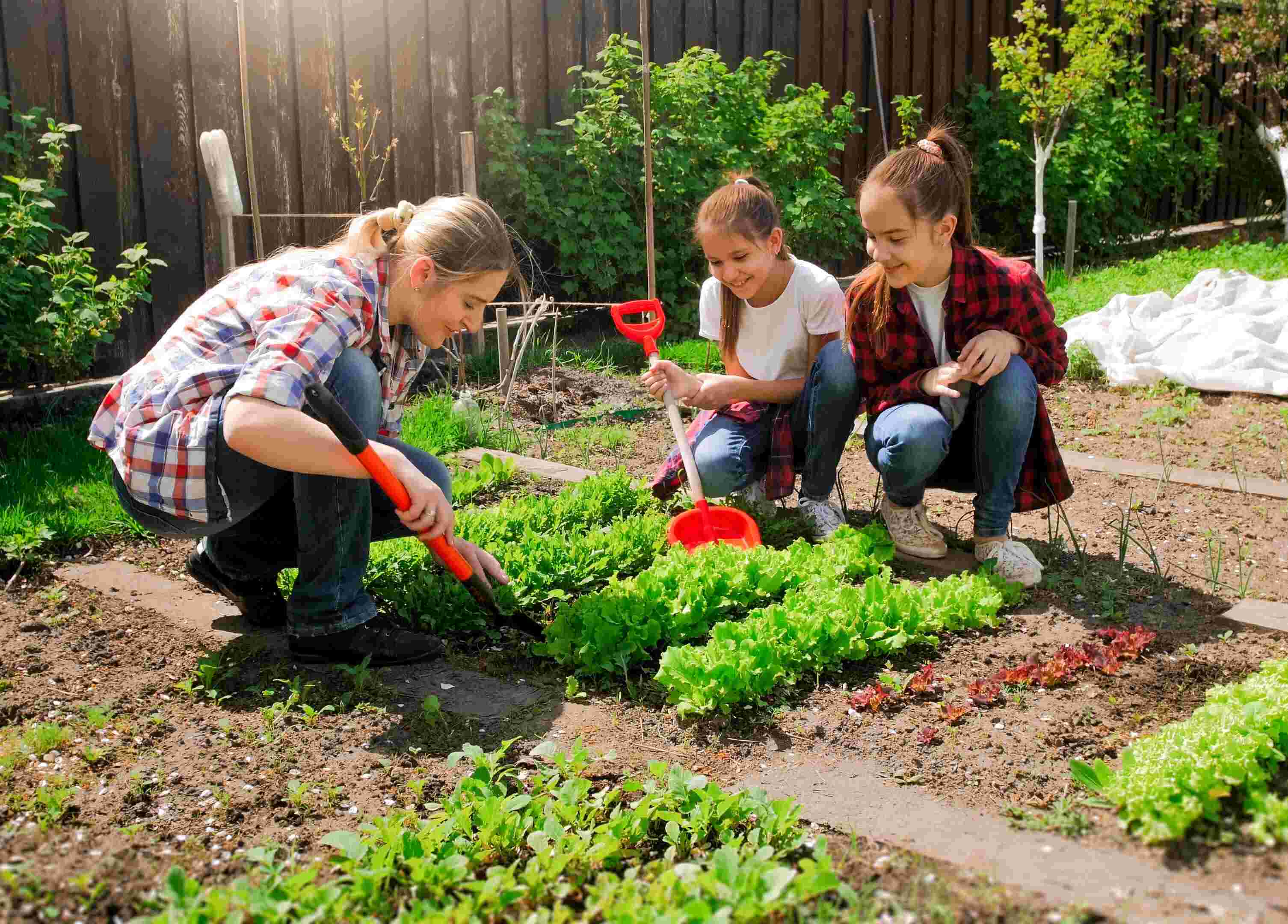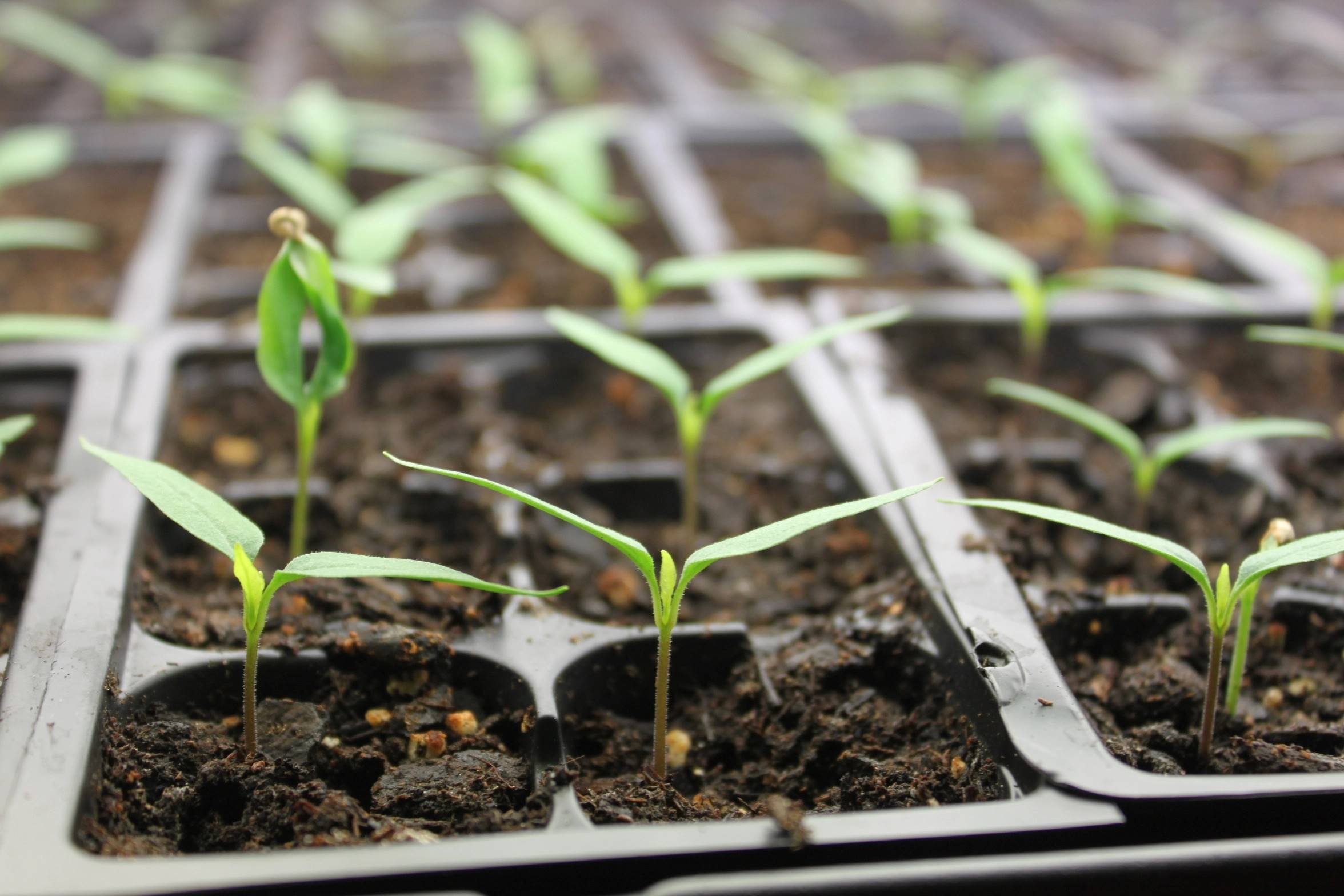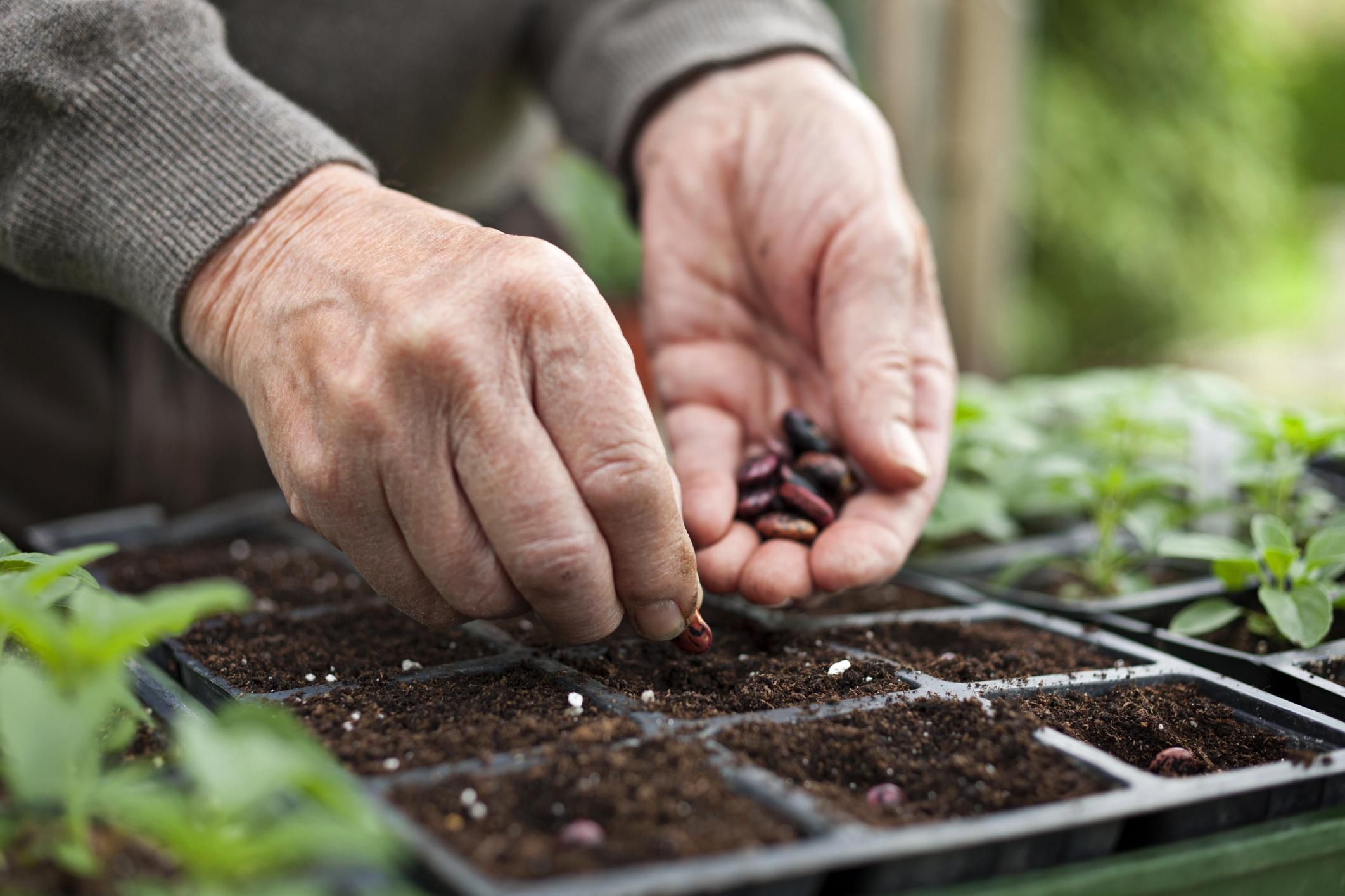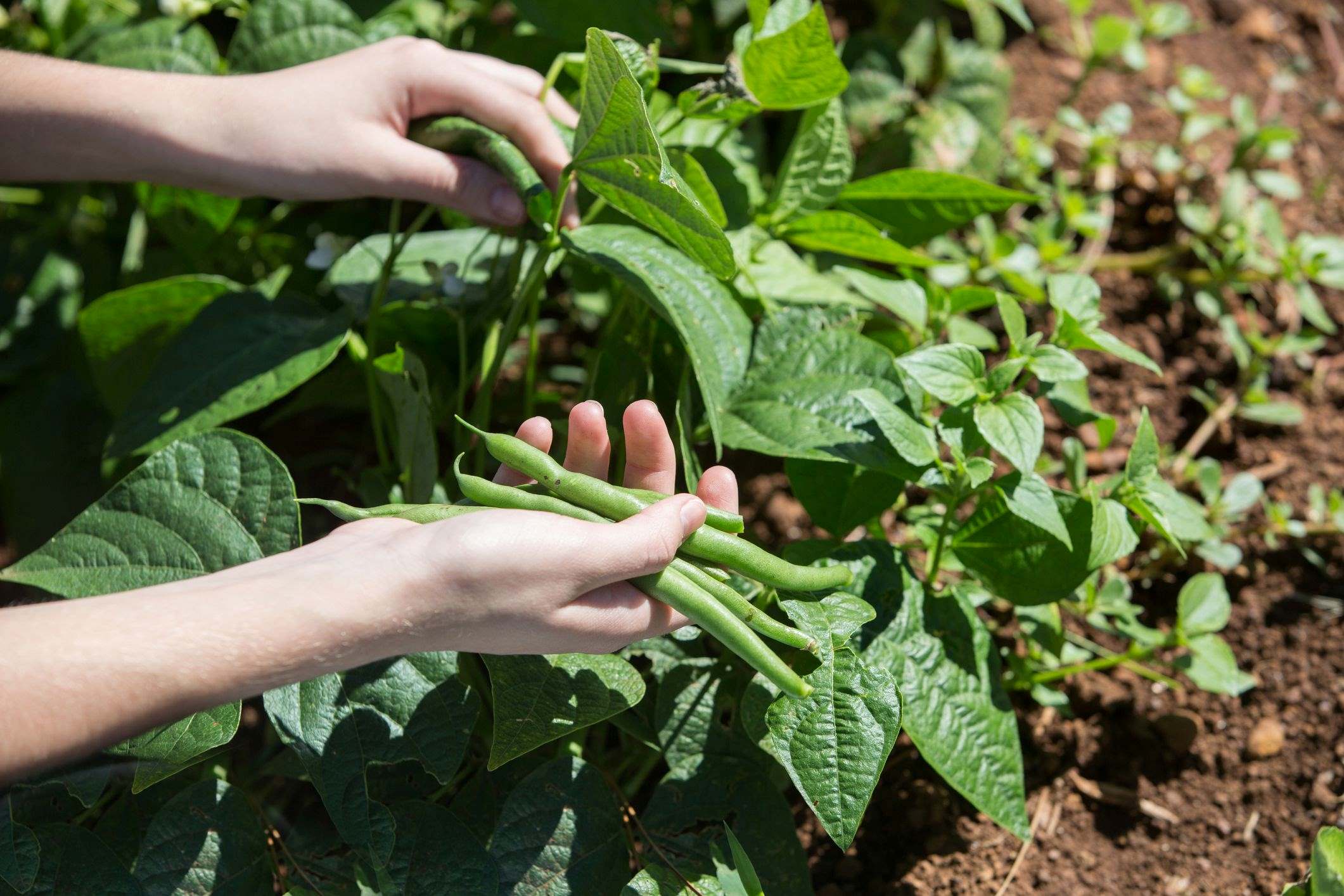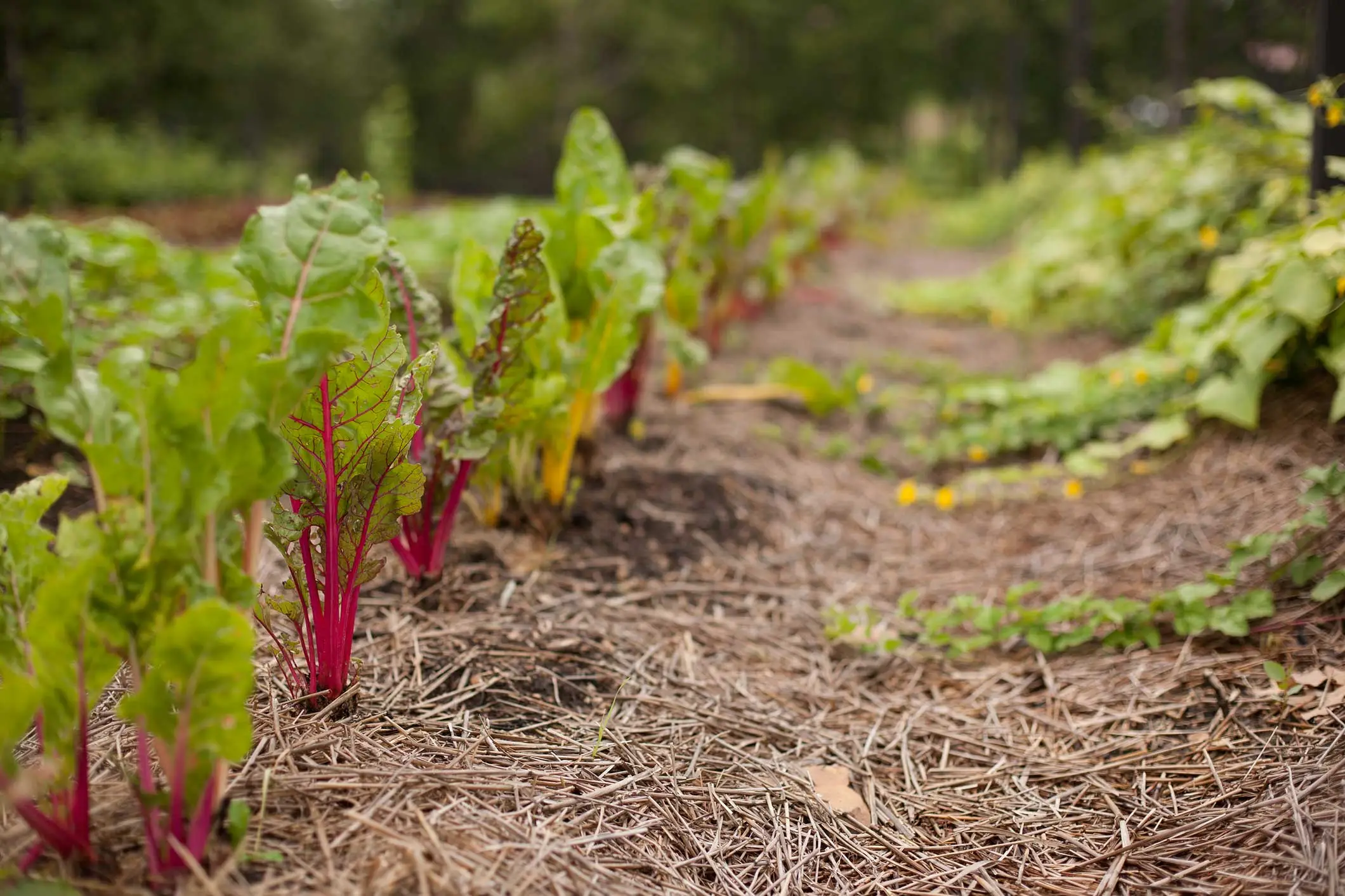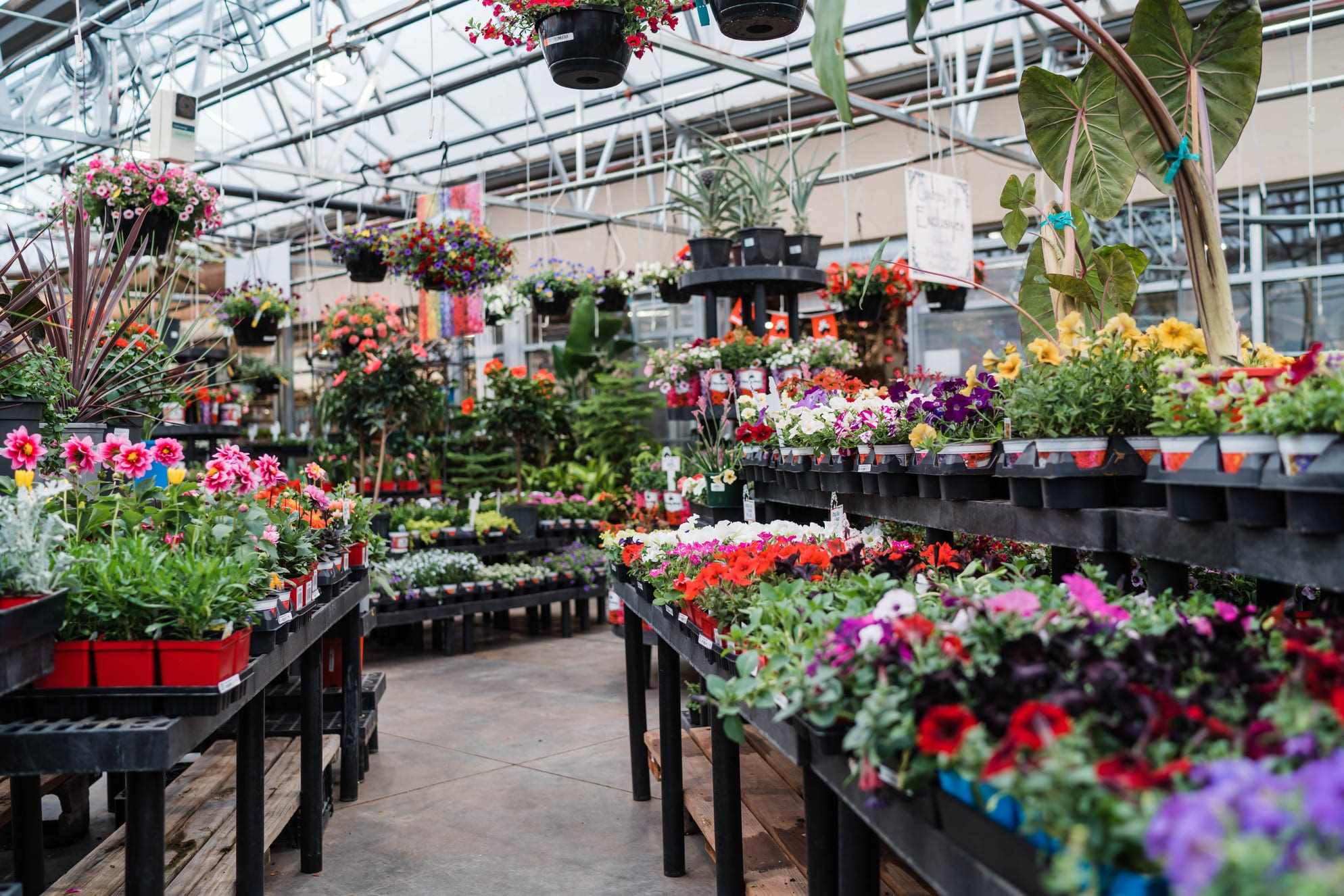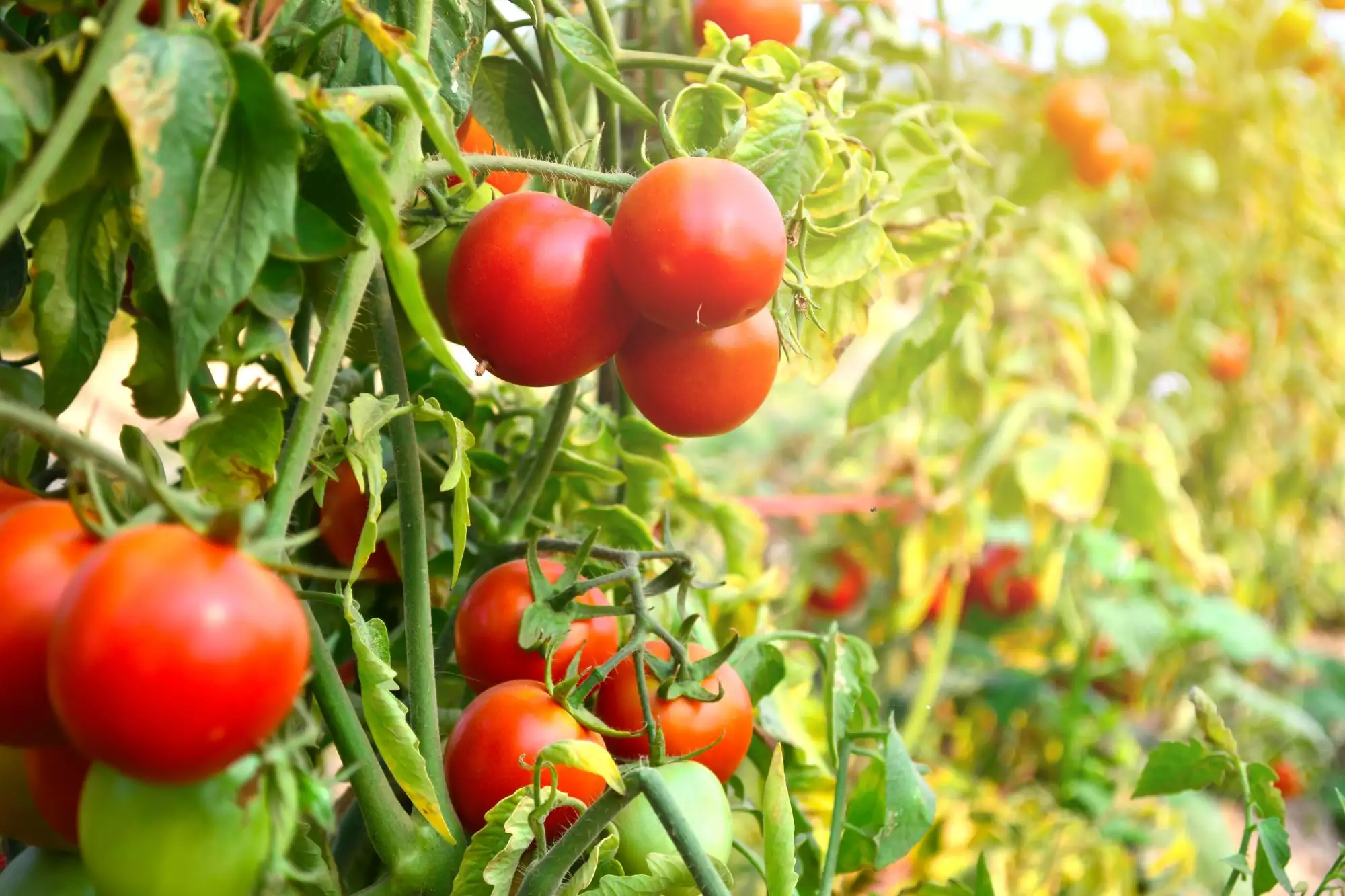Home>Gardening Techniques>Seasonal Gardening>When To Start Planting In Zone 7A


Seasonal Gardening
When To Start Planting In Zone 7A
Modified: January 22, 2024
Discover the best time to start planting in Zone 7A with our guide to seasonal gardening. Plan your garden effectively and maximize your harvest!
(Many of the links in this article redirect to a specific reviewed product. Your purchase of these products through affiliate links helps to generate commission for Chicagolandgardening.com, at no extra cost. Learn more)
Table of Contents
Introduction
Welcome to the world of gardening in Zone 7A! Whether you’re a seasoned gardener or just starting out, this article will provide you with valuable insights on when to start planting in this specific gardening zone. Zone 7A is known for its moderate climate and is perfect for a wide variety of plants to thrive.
Gardening in Zone 7A offers a unique set of challenges and opportunities. Understanding the climate and its impact on plant growth is crucial for successful gardening. In this article, we’ll explore the average last frost date, the importance of soil temperature, as well as recommend vegetables, perennials, and annual flowers that are ideal for Zone 7A.
Whether you’re interested in growing your own vegetables, creating a beautiful flower garden, or both, this guide will help you make informed decisions and get the most out of your gardening endeavors in Zone 7A.
So, if you’re ready to dig into the wonderful world of seasonal gardening in Zone 7A, let’s get started!
Understanding Zone 7A
Before we delve into the specifics of planting in Zone 7A, it’s important to have a solid understanding of what this gardening zone entails. The United States Department of Agriculture (USDA) has classified different regions into specific hardiness zones based on their average annual minimum temperature.
Zone 7A is characterized by its moderate climate. It has an average annual minimum temperature range of 0 to 5 degrees Fahrenheit (-18 to -15 degrees Celsius). This means that winter temperatures in Zone 7A are relatively mild compared to colder zones, allowing for a longer growing season.
However, it’s worth noting that even within Zone 7A, there can be variations in microclimates. Factors such as elevation, proximity to large bodies of water, and urban heat islands can influence the actual temperatures experienced in specific locations within the zone. Therefore, it’s always a good idea to monitor local weather patterns and take them into account when planning your garden.
In addition, Zone 7A experiences four distinct seasons – spring, summer, fall, and winter. This allows for a wide variety of plants to thrive throughout the year, including both cool-season and warm-season crops.
Understanding the characteristics of Zone 7A will help you make informed decisions when it comes to selecting appropriate plants, planning planting schedules, and implementing proper gardening techniques. Now, let’s move on to exploring the factors that affect planting in this zone.
Average Last Frost Date
One of the key factors to consider when determining the optimal time to start planting in Zone 7A is the average last frost date. The last frost date refers to the point in spring when the risk of frost occurring is significantly reduced.
In Zone 7A, the average last frost date typically falls between mid-April and early May. However, it’s important to remember that this is just an average and can vary from year to year. Factors such as climate patterns and fluctuations in weather can affect the actual timing of the last frost.
Knowing the average last frost date is important because many plants are sensitive to frost and can be damaged or killed if exposed to freezing temperatures. By waiting until after the last frost date to plant, you can greatly reduce the risk of losing your precious plants.
For tender warm-season crops like tomatoes, peppers, and cucumbers, it’s best to wait until after the last frost date to transplant them into the garden. These plants thrive in warm soil and air temperatures and are highly susceptible to frost damage.
On the other hand, cool-season crops like lettuce, spinach, and peas can tolerate cooler temperatures and can be planted a few weeks before the average last frost date. These crops can withstand light frosts and even benefit from the cooler spring weather.
By taking the average last frost date into consideration and planning your planting schedule accordingly, you can ensure that your plants have the best chance to thrive and produce a bountiful harvest.
Importance of Soil Temperature
While the average last frost date is an essential factor to consider when planting in Zone 7A, it’s equally important to pay attention to soil temperature. The temperature of the soil plays a vital role in the germination of seeds, root development, and overall plant growth.
Most seeds have specific temperature requirements for germination. Planting seeds when the soil is too cold can result in poor germination rates or even seed rot. Conversely, planting when the soil is too warm can also hinder seed germination.
For example, warm-season crops like beans, corn, and squash require soil temperatures of around 60 to 70 degrees Fahrenheit (15 to 21 degrees Celsius) for optimal germination. Planting these crops when the soil is still cold can cause slow or uneven germination and reduce the overall yield.
On the flip side, cool-season crops like carrots, radishes, and lettuce prefer cooler soil temperatures for successful germination. Planting them in soil that is too warm can lead to poor seed quality and bolting (premature flowering), which negatively impacts the edible parts of the plant.
A soil thermometer is a valuable tool for determining the temperature of the soil. Measure the soil temperature a few inches below the surface at the same time consistently for accurate readings. As a general guideline, the soil temperature should be at or above the recommended range for the specific crop you’re planting.
Aside from germination, soil temperature also affects root development. When the soil is too cold, the growth of roots can be stunted, preventing plants from absorbing nutrients efficiently. Gradually warming soil temperatures in spring promote healthy root growth and ultimately lead to vigorous plant growth.
By understanding the importance of soil temperature and taking it into consideration alongside the average last frost date, you can ensure that your plants have the best possible start and thrive in your Zone 7A garden.
Recommended Vegetables for Zone 7A
Zone 7A provides a favorable climate for a wide variety of vegetables to thrive. Whether you’re a fan of leafy greens, root vegetables, or vine crops, here are some recommended vegetables that are well-suited for Zone 7A:
- Tomatoes: Tomato plants are warm-season crops that require full sun and well-drained soil. There are numerous tomato varieties available, from cherry tomatoes to large beefsteak types. Start seeds indoors 6-8 weeks before the average last frost date or purchase transplants to give them a head start.
- Peppers: Both sweet bell peppers and hot peppers, like jalapenos or habaneros, can be grown in Zone 7A. These plants thrive in warm soil and require at least 6-8 hours of direct sunlight per day. Start seeds indoors about 8-10 weeks before the average last frost date or purchase transplants.
- Cucumbers: Cucumbers are vining vegetables that love warm weather. They can be grown on trellises or allowed to sprawl on the ground. Sow cucumber seeds directly in the garden after the last frost date for best results.
- Leafy Greens: Cool-season greens like lettuce, spinach, and kale are great choices for Zone 7A. These crops prefer cooler temperatures and can be planted as soon as the soil can be worked in spring. Succession planting throughout the season ensures a continuous harvest.
- Root Vegetables: Carrots, beets, and radishes are root vegetables that perform well in Zone 7A. These crops require loose, well-drained soil for optimal growth. Sow seeds directly in the garden once the soil temperature reaches the appropriate range for each vegetable.
- Beans: Both bush and pole beans are easy to grow in Zone 7A. These warm-season crops thrive in full sun and well-drained soil. Sow bean seeds directly in the garden after the last frost date for a bountiful harvest.
Remember to follow planting guides and instructions specific to each vegetable to ensure proper spacing, watering, and care throughout the growing season. By selecting vegetables that are well-suited for Zone 7A, you’ll be on your way to a successful and rewarding gardening experience.
Perennial Planting in Zone 7A
Perennials are a great addition to any garden, as they come back year after year, providing beauty and color to your landscape. In Zone 7A, there are numerous perennial plants that thrive in the moderate climate. Here are some recommended perennials for Zone 7A:
- Daylilies: Daylilies are popular perennials known for their vibrant flowers. They come in a variety of colors and are extremely low-maintenance. Plant daylilies in well-drained soil and provide them with full to partial sun.
- Hostas: Hostas are shade-loving perennials that add a lush and tropical feel to your garden. They are available in various sizes and have attractive foliage. Plant hostas in moist, well-drained soil and provide them with partial to full shade.
- Coneflowers: Coneflowers, also known as Echinacea, are native perennials with beautiful daisy-like flowers. They attract pollinators and add a pop of color to your garden. Plant coneflowers in well-drained soil and give them full sun.
- Black-Eyed Susans: Black-Eyed Susans are sun-loving perennials that produce golden-yellow flowers with dark centers. They are drought-tolerant and attract butterflies. Plant Black-Eyed Susans in well-drained soil and provide them with full sun.
- Peonies: Peonies are prized for their showy and fragrant blooms. They come in a range of colors and thrive in well-drained soil with full sun to light shade. Plant peonies in a location where they have room to grow, as they dislike being transplanted.
- Sedums: Sedums, also known as stonecrops, are drought-tolerant and easy to grow perennials. They have succulent leaves and come in various heights and flower colors. Plant sedums in well-drained soil and provide them with full sun.
When planting perennials in Zone 7A, it’s essential to consider the specific soil and sunlight requirements of each plant. Ensure that the soil is well-prepared with organic matter and has good drainage to promote healthy root development. Water newly planted perennials regularly until established, and mulch around the base of the plants to conserve moisture and suppress weeds.
By incorporating perennial plants into your Zone 7A garden, you can enjoy their beauty and reap the benefits of their low-maintenance nature for years to come. Make sure to choose perennials that suit your landscape design and provide a variety of bloom times for continuous visual interest.
Annual Flower Planting in Zone 7A
Annual flowers are a fantastic way to add bursts of vibrant color and seasonal interest to your garden. In Zone 7A, with its moderate climate and longer growing season, you have a wide range of annual flowers to choose from. Here are some recommended annual flowers for Zone 7A:
- Marigolds: Marigolds are cheerful flowers that come in various shades of orange, yellow, and burgundy. They are easy to grow and provide excellent pest control properties. Plant marigolds in well-drained soil and provide them with full sun.
- Zinnias: Zinnias are bright and bold annuals that attract butterflies to your garden. They are available in a wide array of colors and bloom shapes. Plant zinnias in well-drained soil and provide them with full sun.
- Cosmos: Cosmos are delicate flowers that add a sense of grace to any garden. They come in various shades of pink, white, and orange. Plant cosmos in well-drained soil and give them full sun.
- Petunias: Petunias are versatile annuals with trumpet-shaped flowers that bloom in a range of colors. They are ideal for hanging baskets, containers, or as a bedding plant. Plant petunias in well-drained, fertile soil and provide them with full sun.
- Impatiens: Impatiens are popular shade-loving annuals that provide a splash of color even in the darkest corners of your garden. They come in various shades of pink, purple, red, and white. Plant impatiens in well-drained soil and provide them with partial to full shade.
- Salvia: Salvia, also known as sage, is a heat-tolerant annual with tall spikes of flowers in vibrant shades of blue, purple, red, and white. Plant salvias in well-drained soil and give them full sun.
When planting annual flowers, it’s important to prepare the soil by incorporating organic matter to improve its fertility and drainage. Follow the specific planting instructions for each flower, including spacing and depth, to ensure proper growth and development.
Water annual flowers regularly, especially during hot and dry periods, to keep the soil evenly moist. Applying a layer of organic mulch around the plants can help conserve moisture and suppress weeds.
One of the advantages of annual flowers is the ability to change your garden’s color scheme and design each year. Experiment with different combinations and plantings to create stunning displays that reflect your personal style.
By incorporating annual flowers into your Zone 7A garden, you can enjoy a burst of vibrant colors and textures throughout the growing season. Whether in containers, beds, or hanging baskets, annual flowers will elevate your garden’s aesthetic appeal and provide endless enjoyment.
Spring Planting in Zone 7A
Spring is an exciting time in Zone 7A, as the garden comes alive with new growth and vibrant colors. This season provides an excellent opportunity to plant a wide variety of crops and flowers. Here are some tips for successful spring planting in Zone 7A:
- Cool-Season Vegetables: Spring is the perfect time to plant cool-season vegetables such as lettuce, spinach, kale, carrots, and radishes. These crops thrive in the cooler temperatures of spring and can tolerate light frosts. Start sowing seeds or transplanting seedlings outdoors as soon as the soil can be worked.
- Annual Flowers: Spring is an ideal time to plant annual flowers that prefer cooler temperatures. Pansies, violas, snapdragons, and sweet peas are just a few examples. These flowers will add instant color and beauty to your garden. Plant them in well-prepared soil and provide regular watering.
- Perennial Flowers: Spring is a good time to plant perennial flowers in Zone 7A as well. This allows the plants to establish their root systems before the heat of summer arrives. Choose perennials that are suitable for your garden’s sunlight and soil conditions, and follow their specific planting instructions.
- Fruit Trees and Berry Bushes: Spring is also a favorable time to plant fruit trees and berry bushes. Apples, peaches, pears, and blueberries are popular choices for Zone 7A. Ensure that the soil is well-drained and provide the necessary sunlight and regular watering for these fruit-bearing plants.
- Prepare the Soil: Before planting, it’s essential to prepare the soil properly. Remove any weeds or debris and amend the soil with compost or organic matter to improve its fertility and drainage. This will provide a healthy environment for your plants to grow.
- Monitor Weather Conditions: Keep an eye on the weather forecast and be prepared to protect your newly planted seedlings or transplants from unexpected late frosts or extreme temperature fluctuations. Covering them with row covers or using protective cloths can help safeguard them from frost damage.
Spring is a busy and exciting time for gardeners in Zone 7A. Take advantage of the cooler temperatures and ample rainfall to get a head start on your planting. By planning and following these tips, you can maximize the success of your spring garden and enjoy the beauty of nature’s awakening.
Fall Planting in Zone 7A
Fall is a fantastic time for planting in Zone 7A, as the cooler temperatures and adequate rainfall create optimal conditions for establishment and root growth. Fall planting allows plants to establish themselves before the harsh winter and provides a head start for the following growing season. Here are some tips for successful fall planting in Zone 7A:
- Cool-Season Vegetables: Fall is an excellent time to grow cool-season vegetables such as broccoli, cauliflower, cabbage, Brussels sprouts, and kale. These crops thrive in the cooler temperatures of fall, and the flavors are often enhanced by the chill. Start seedlings indoors in mid-summer or purchase transplants for a timely harvest.
- Perennial Flowers: Fall is also an ideal time to plant perennial flowers in Zone 7A. The soil is still warm, which encourages root growth, while cooler air temperatures reduce the stress on newly planted perennials. Choose hardy perennials suitable for your garden’s light and soil conditions, and follow their specific planting instructions.
- Spring-Blooming Bulbs: Fall is the time to plant spring-blooming bulbs such as tulips, daffodils, crocuses, and hyacinths. These bulbs require a period of cold dormancy to produce beautiful blooms in spring. Plant them at the recommended depth and spacing, and in well-drained soil for a stunning spring display.
- Transplanting Trees and Shrubs: Fall is an excellent time to transplant or add trees and shrubs to your landscape. The cooler temperatures and higher moisture levels reduce stress on the plants and promote root establishment before winter. Choose suitable varieties for your zone and provide proper planting and care.
- Prepare the Soil: Before planting, ensure that you prepare the soil properly. Remove any weeds or debris and amend the soil with organic matter to improve its fertility and drainage. This will provide a favorable environment for your plants’ root growth and development.
- Water Regularly: While fall generally brings more rainfall, it’s still important to monitor the moisture levels in the soil and water as needed. Adequate hydration will help newly planted vegetation establish strong root systems before the ground freezes.
Fall planting in Zone 7A allows you to extend your gardening season and reap the rewards in the following year. By taking advantage of the cooler temperatures and favorable conditions, you can enjoy a productive fall garden and set the stage for a beautiful spring display.
Conclusion
Gardening in Zone 7A offers a plethora of possibilities for a bountiful and beautiful garden throughout the seasons. By understanding the characteristics of Zone 7A, including the average last frost date, the importance of soil temperature, and the recommended planting options, you can make informed decisions to ensure success in your gardening endeavors.
Whether you’re planting vegetables, perennial flowers, or annual flowers, timing is key. Knowing the average last frost date allows you to protect your plants from potential frost damage, while considering soil temperature ensures optimal germination and root development. Additionally, selecting the right plants for your zone, be it warm-season crops, cool-season vegetables, or a mix of perennials and annuals, is essential for a thriving garden.
Zone 7A provides a moderate climate that supports an abundance of plant life, allowing for a longer growing season and an extended opportunity to indulge in the joys of gardening. By preparing the soil, monitoring weather conditions, and providing proper care, you can create a flourishing garden that brings beauty and sustenance to your outdoor sanctuary.
So, whether you’re a seasoned green thumb or a novice gardener, don’t hesitate to dive into the world of gardening in Zone 7A. With the right knowledge, a touch of creativity, and a bit of patience, you can create a vibrant garden that is a testament to the wonders of seasonal gardening.
